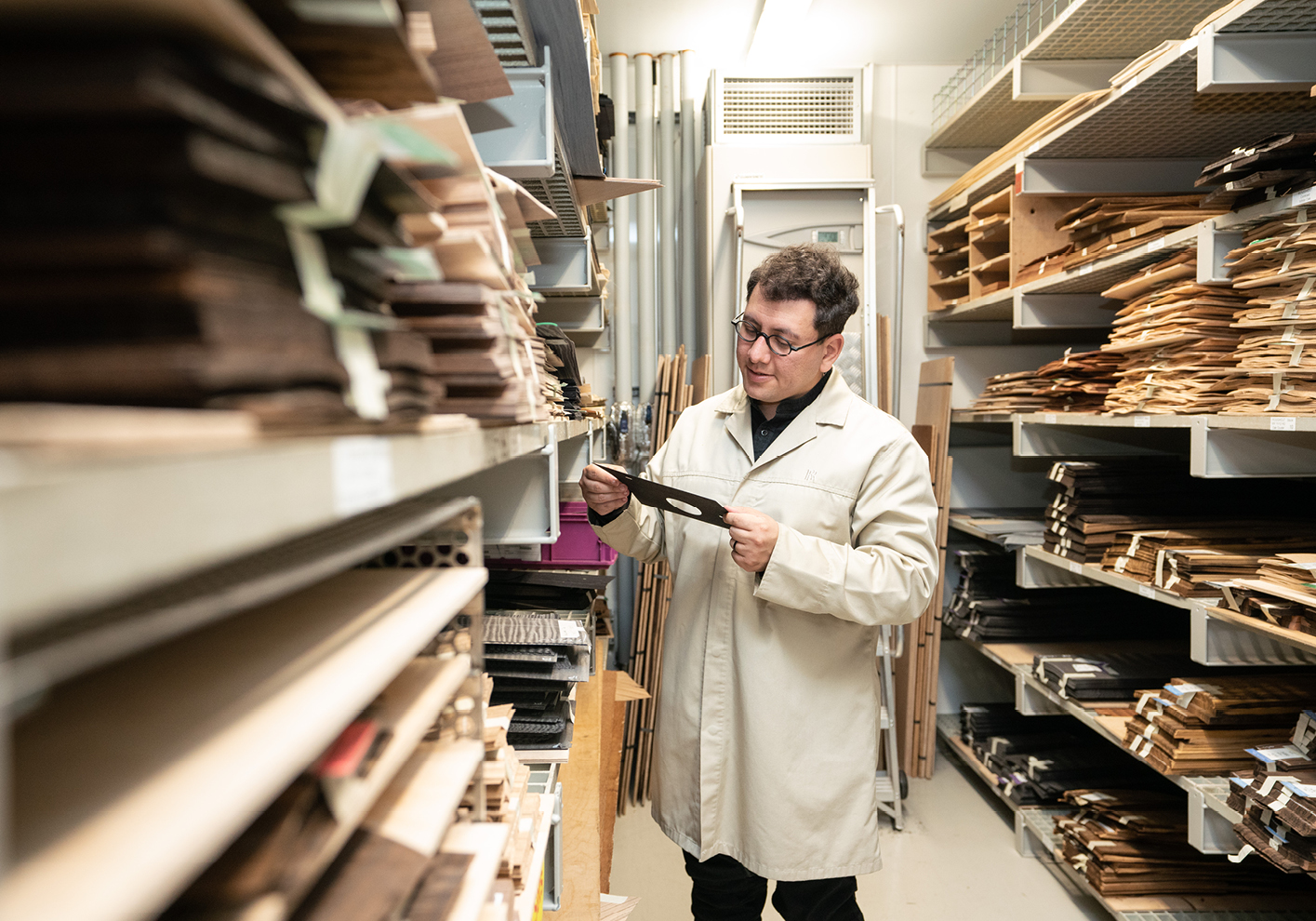WORDS
Gemma Billington
In 2024, the conversation around AI and how it will impact our lives is impossible to avoid. Whatever side of the fence you find yourself on – that is, whether the technology is to be feared or embraced – there is no denying that the age of AI has arrived.
But that isn’t to say that AI is entirely new. It’s been bubbling under the surface for years, and for Turkish multi-media artist Refik Anadol, it has been his primary mode of expression for more than a decade.

‘It’s an exciting time for AI because the world is very curious about it, and I want to demystify it,’ Anadol says on an exclusive walk-through of his latest exhibition at Serpentine North Gallery. Echoes of the Earth: Living Archive is the Turkish-born, American-based artist’s first major institutional solo exhibition in the UK. The exhibition brings together three of his most recent projects, and comprises enormous wrap-around LED canvases. This includes the UK premiere of Living Archive: Large Nature Model, specially adapted for Serpentine. The installation is made from AI-generated images inspired by data of flora, fungi and fauna collected using Anadol’s open-source Large Nature Model – what he calls the world’s first open-source generative AI model dedicated to nature. It is trained on sources like the Smithsonian Institution, National Geographic and the Natural History Museum, as well as photography from the Amazon rainforest personally collected by Anadol and his team. It took around a year to compile and features a mind-bending half a billion images.

Echoes of the Earth is inspired by nature, with Anadol musing: ‘We can go to nature, but can nature come to us?’ The effect on the viewer as soon as you step inside the space is immediate and overpowering. What’s more, you don’t need a deep understanding of technology or indeed art to appreciate it and be moved by such spectacle. In one section of the exhibition, bean bags are dotted throughout a corridor, inviting guests to lie back and marvel at the constantly moving artworks on the ceiling, which are accompanied by an equally hypnotic soundtrack, also constructed by AI.
Anadol obtained a Master of Fine Arts degree at UCLA, where he is now a lecturer at the university’s Department of Design Media Arts. Today he resides in Los Angeles, where he operates the Refik Anadol Studio as well as RAS LAB, the studio’s research practice. In 2016, he became Google’s first in-residence artist for its Artists and Machine Intelligence (AMI) programme, and it’s little surprise that he came to the attention of Rolls-Royce when the marque launched its dedicated arts programme, Muse. This was founded in 2019 on the basis of ‘fostering creativity through collaboration with artists who share [Rolls-Royce’s] passion for pushing technical and conceptual boundaries’. Anadol was one of the first artists commissioned by the programme. His artwork, Art of Perfection: Data Painting, is a large LED canvas comprising data from every car paint colour developed at Goodwood (the home of Rolls-Royce) over the last decade – around 44,000. The artwork remains on permanent display at Goodwood, having made its debut at Frieze Los Angeles in 2020.

While the average person may not be able to access an Anadol original to display in their home, getting up close and personal with the immersive Echoes of the Earth is the next best thing. Anadol believes that the future of AI artworks is that ‘we will be able to step inside them: smell, taste and interact with them’ on an unprecedented level. But given the rapid advances in technology in recent years – ‘eight years is like 80 in AI,’ Anadol quips – one can’t imagine the wait will be too long.
Refik Anadol: Echoes of the Earth: Living Archive is on display at Serpentine North Gallery until 7 April 2024, entry is free; serpentinegalleries.org; rolls-roycemotorcars.com




